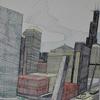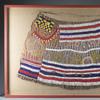American Stories: Paintings of Everyday Life, 1765–1915, at Metropolitan Museum of Art
- NEW YORK, New York
- /
- September 08, 2009
From the decade before the Revolutionary War to the eve of World War I, many of America's most revered artists captured the temperament of their respective eras on canvas. They recorded and defined in their finest paintings the emerging character of Americans as individuals, citizens, and members of ever-widening communities. Opening at The Metropolitan Museum of Art this fall, American Stories: Paintings of Everyday Life, 1765–1915 will bring together for the first time more than 100 of these iconic works that tell compelling stories of life's tasks and pleasures. The first overview of the subject in more than 35 years, the exhibition includes loans from leading museums and private lenders—and many paintings from the Metropolitan's own distinguished collection. American Stories features masterpieces by John Singleton Copley, Charles Willson Peale, William Sidney Mount, George Caleb Bingham, Winslow Homer, Thomas Eakins, John Singer Sargent, Mary Cassatt, John Sloan, and George Bellows, and notable works by some of their key colleagues.
The exhibition is made possible by Alamo Rent A Car, The Marguerite and Frank A. Cosgrove Jr. Fund, The Peter Jay Sharp Foundation, the Henry Luce Foundation, and the Oceanic Heritage Foundation.
Exhibition dates: October 12, 2009–January 24, 2010Exhibition location: Special Exhibition Galleries, second floorPress preview: Monday, October 5, 10:00 a.m.–noon
Exhibition Overview
The exhibition examines stories based on familiar experience and the means by which painters tell their stories through their choices of settings, players, action, and various narrative devices. The artists' responses to foreign prototypes, travel and training, changing exhibition venues, and audience expectations are examined, as are their evolving styles and standards of storytelling along the central themes of childhood, marriage, the family, and the community; the production and reinforcement of citizenship; attitudes towards race; the frontier as reality and myth; and the process and meaning of art making.
The exhibition is arranged in four chronological sections. The first—Inventing American Stories, 1765–1830—begins with artists who told stories through portraits. Serving their sitters' self-conscious interest in how they appeared in the eyes of others, American portraitists often emulated British compositions. Although these artists focused on individuals and particular locales and relationships, the cleverest of them responded to broader narrative agendas and to the natural impulse to tell stories. In his portrait of his colleague Paul Revere (1768, Museum of Fine Arts, Boston), John Singleton Copley embedded subtle narrative into a traditional single-figure format, with the silversmith's gestures and gaze conveying volumes about the time in which he lived. As their patrons learned to read portraits for more than likeness and to appreciate artistic license, portraitists began to gratify their sitters by telling subtle personal stories in increasingly elaborate compositions. In his ingenious double-likeness of Benjamin and Eleanor Ridgely Laming (1788, National Gallery of Art, Washington), for instance, Charles Willson Peale implied the sexual bond that defined the Lamings' marriage. Later in this period, some painters told grand stories in pictures produced for public exhibition, rather than purely for private enjoyment. In Gallery of the Louvre (1831–33, Terra Foundation for American Art, Chicago), Samuel F. B. Morse proposed that his compatriots must achieve cultural independence from Europe even while they learned from the Old World's greatest artistic achievements.
In the second section of the exhibition—Stories for the Public, 1830–1860—American artists responded to an expanding and increasingly diverse audience for public exhibitions; new mechanisms for selling and reproducing art; and middle-class patrons' growing cultural literacy and wealth. They almost invariably looked to precedents in European genre painting to help them tell their stories, drawing inspiration from Old Master Dutch or more recent French and English examples, known through popular prints. Genre painters preferred domestic scenes, lighthearted narratives, clear settings, stereotyped characters, and obvious gestures and details so that viewers could read their pictorial dramas easily and recognize themselves in relation to them. Many American genre painters favored rural locales, which were associated with fundamental national values. In The City and Country Beaux (ca. 1838–40, Sterling and Francine Clark Art Institute, Williamstown), Francis William Edmonds suggested the virtues and vices of each locale as a young woman chooses between a slick Yankee and a self-satisfied country bumpkin. Painters in this era gently confronted the deepening rifts between the races, immigrants and native workers, and geographical divisions between north and south, east and west. For example, William Sidney Mount commented on race in a rural context in The Power of Music (1847, Cleveland Museum of Art), which shows a black man set apart from white listeners and yet enjoying the sound of the fiddle played by a young white man. In a similarly euphemistic vein, Missouri-born George Caleb Bingham tamed for eastern viewers the perceived perils of foreign types and the frontier in Fur Traders Descending the Missouri (1845, The Metropolitan Museum of Art).
The third section of the exhibition is Stories of War and Reconciliation, 1860–1877. Fought mainly by non-professional soldiers, the Civil War was essentially democratic, as was implied by Winslow Homer in his paintings of daily life at the front, including Pitching Quoits (1865, Harvard University Art Museums). To assuage the sorrow provoked by the war and to heal the nation's fractured spirit, painters in this period turned away from political content toward domestic and leisure-time subjects. As women gained prominence after the loss of so many men in the war, artists portrayed them in new roles. Homer's Croquet Scene (1866, The Art Institute of Chicago), for example, shows women competing with men on a literally level playing field and celebrates the nation's return to peaceful pursuits. Expressing nostalgia for pre-war innocence, many artists portrayed children, including Seymour Joseph Guy, whose Making a Train (1867, Philadelphia Museum of Art) epitomizes the impulse. And, as the agrarian basis of American life gave way to urbanization and industrialization, artists who were themselves working in thriving cities manifested the longing for earlier, simpler times in their nostalgic depictions of rural activities. In The New Bonnet (1876, The Metropolitan Museum of Art), painted in the year of the Centennial, Eastman Johnson evokes a quiet moment as two women scrutinize a hat while their gentleman companion warms his hands by the fire in an old-fashioned Nantucket interior. By the mid-1870s, the nation's visual culture burgeoned and the taste of American viewers and patrons matured in response to expanded opportunities for travel; access to more and better graphic reproductions of paintings; and exposure to art in newly founded museums. American painters yielded to an unprecedented internationalism, embracing new stories and new means by which to tell them. In Cosmopolitan and Candid Stories, 1877–1915, the exhibition's fourth and final section, American artists redefined national identity in an international context. They were as likely to paint people in Paris or the French countryside as in New York or New England. They revealed in their works an appreciation of the journalistic, fragmented narrative that inflected foreign examples, and they evaded even more than their predecessors the harsh realities of modern existence. American painters also operated in a newly complex art world, which broadened their opportunities for displaying and marketing art on both sides of the Atlantic and altered their professional standards. Paris resident Mary Cassatt told of the daily routine of sophisticated urban women and indicated her own appreciation of female empowerment in Woman and a Girl Driving (1881, Philadelphia Museum of Art). John Singer Sargent, also an expatriate, frankly recorded an encounter with ordinary Venetians in A Street in Venice (ca. 1880–82) and a visit to a well-to-do American family in An Interior in Venice (1899, Royal Academy of Arts, London). William Merritt Chase escaped from the city to a tranquil suburban retreat in Idle Hours (ca. 1894, Amon Carter Museum), depicting fashionable figures relaxing on a placid greensward along a beach in Southampton, Long Island, and in Ring Toss (1896, Marie and Hugh Halff) showed three of his daughters at play in his nearby summer studio. Some painters examined men at work and leisure and celebrated new heroes such as cowboys, who became emblems of American masculinity and the receding frontier. Thomas Anshutz's Ironworkers' Noontime (1880, Fine Arts Museums of San Francisco), Thomas Eakins's Swimming (1885, Amon Carter Museum), and Frederic Remington's Fight for the Water Hole (1903, Museum of Fine Arts, Houston) are key examples. The Ashcan artists, who challenged American Impressionist decorum after 1900, were committed to recording the modern world frankly and to grappling with gritty urban realities. Yet, John Sloan typically retained the Impressionists' cheerful outlook in The Picnic Grounds (1906–7, Whitney Museum of American Art), even though he depicted indecorous working-class girls in a park in Bayonne, New Jersey. Sloan's Ashcan associates invited viewers to experience other distinctive, even sordid urban venues. In Club Night (1907, National Gallery of Art, Washington), George Bellows provided ringside seats at a brutal boxing match, which women, who could have seen the painting, could not actually have attended.
Catalogue and Related Programs
The exhibition is accompanied by a fully illustrated catalogue. It was written by the exhibition's curators, H. Barbara Weinberg (Alice Pratt Brown Curator of American Paintings and Sculpture) and Carrie Rebora Barratt (Curator and Manager of the Henry R. Luce Center for the Study of American Art), both of the Metropolitan Museum; and Bruce Robertson (Professor of Art History, University of California, Santa Barbara, and Consulting Curator, Department of American Art, Los Angeles County Museum of Art). Margaret C. Conrads, Samuel Sosland Curator of American Art, The Nelson-Atkins Museum of Art, Kansas City, also contributed to the catalogue. Published by the Metropolitan Museum and distributed by Yale University Press, the book is suitable for non-specialists as well as scholars, and will be available in the Museum's bookshops.
The catalogue is made possible by the William Cullen Bryant Fellows.
A variety of educational programs will complement the exhibition. Highlights include subscription lectures in the Grace Rainey Rogers Auditorium by Carrie Rebora Barratt and H. Barbara Weinberg at 11:00 a.m. on Thursday, October 22 and 29, respectively. Gallery talks, family programs, and a teacher workshop will also be offered.
Education programs are made possible by The Mr. and Mrs. Raymond J. Horowitz Foundation for the Arts.
An audio tour, part of the Metropolitan's Audio Guide program, will be available. The fee for rentals is $7, $6 for members, $5 for children under 12.
The Audio Guide is sponsored by Bloomberg.
The exhibition will be featured on the website of the Metropolitan Museum (www.metmuseum.org).
Credits
The exhibition is organized by H. Barbara Weinberg, Alice Pratt Brown Curator of American Paintings and Sculpture, and Carrie Rebora Barratt, Curator and Manager of the Henry R. Luce Center for the Study of American Art, both of the Metropolitan Museum, and Bruce Robertson, Professor of Art History, University of California, Santa Barbara, and Consulting Curator, Department of American Art, Los Angeles County Museum of Art.
After its presentation at the Metropolitan Museum, the exhibition will be shown at the Los Angeles County Museum of Art (February 28–May 23, 2010).
# # #
1000 Fifth Avenue
New York, New York
About Metropolitan Museum of Art
The Metropolitan Museum of Art is one of the world's largest and finest art museums. Its collections include more than two million works of art spanning 5,000 years of world culture, from prehistory to the present and from every part of the globe. Founded in 1870, the Metropolitan Museum is located in New York City's Central Park along Fifth Avenue (from 80th to 84th Streets). Last year it was visited by 5.2 million people.
















